It’s time once again to recap the year in fish. We’ll be counting down all the exciting new species named this year (and be sure to check out the Top Ten Reef Finds for a look at some other juicy discoveries). There were somewhere around 80 new species described from shallow tropical marine habitats, roughly the same number we saw last year. Of course, many of these were relatively drab creatures which didn’t get written about here. Don’t get me wrong, patternless moray eels and cryptic sea bream taxa are great and all, but they don’t exactly inspire wonder quite like the fishes we’ll be looking at in this top ten list. So without further ado…
#10 Chromis torquata
Every year brings with it a handful of new damselfish species, and we got an interesting bunch this time around. Abudefduf nigrimargo was described as a cryptic species of sergeant major, rendering that group of common damselfishes frustratingly difficult (nay, impossible?) to identify now. West Papua saw a couple interesting microendemic taxa in the form of Chrysiptera uswanasi and Pomacentrus bellapictus, the latter of which is known from just one tiny island. Japan has a new chromis whose juveniles are a nice lemony yellow, Chromis katoi. But the 2018 Damselfish Of The Year award goes to Chromis torquata, a charismatically patterned species found only in the Mascarene Islands. Unlike the other damselfishes we just mentioned, C. torquata has been exported into the aquarium trade. Juveniles are a pleasant blue and yellow, with a prominent dark blotch above their pectoral fins, while the adult, seen here, is a bit darker and more complex in its coloration. An exquisite fish of subtle beauty.
#9 Histiophryne narungga
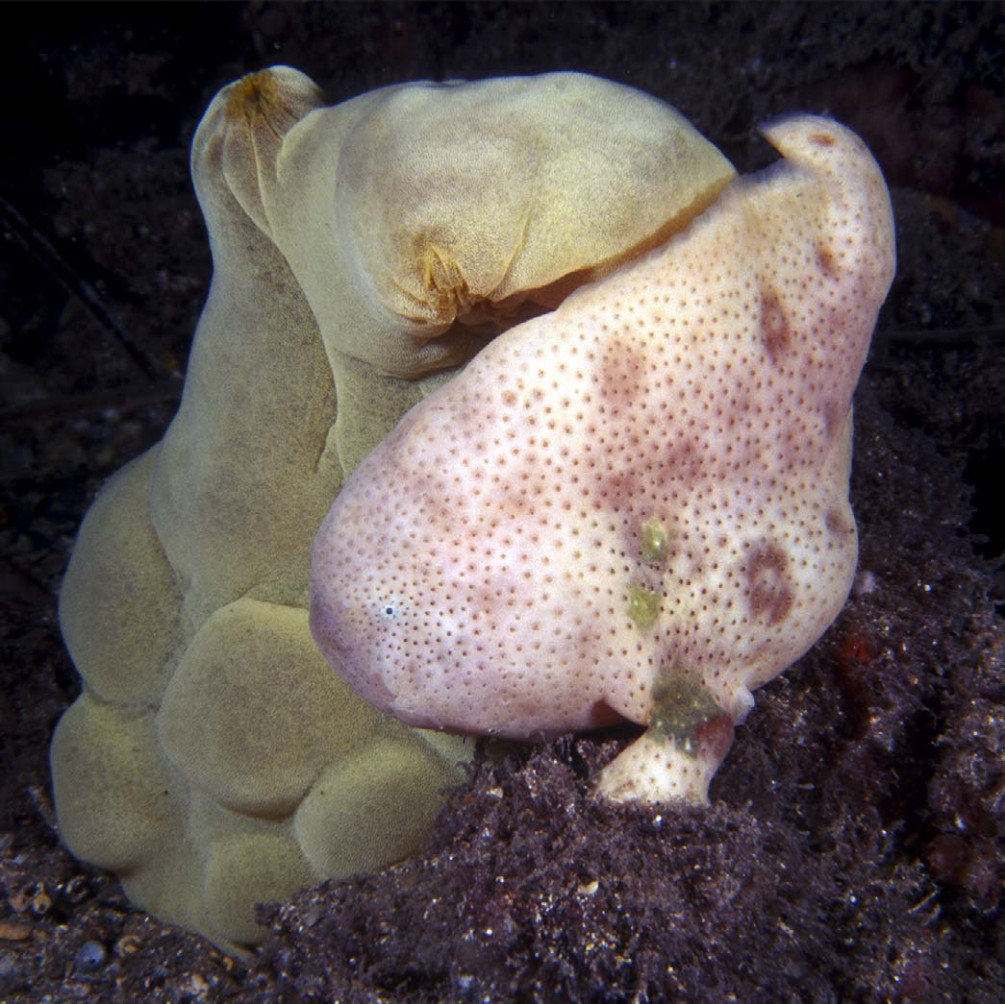
Narungga Frogfish (Histiophryne narungga), doing its best poriferan impersonation. Credit: Scott W. Michael / Arnold & Pietsch 2018
Check out this thicc spongy boi.
#8 Cryptocentrus nanus
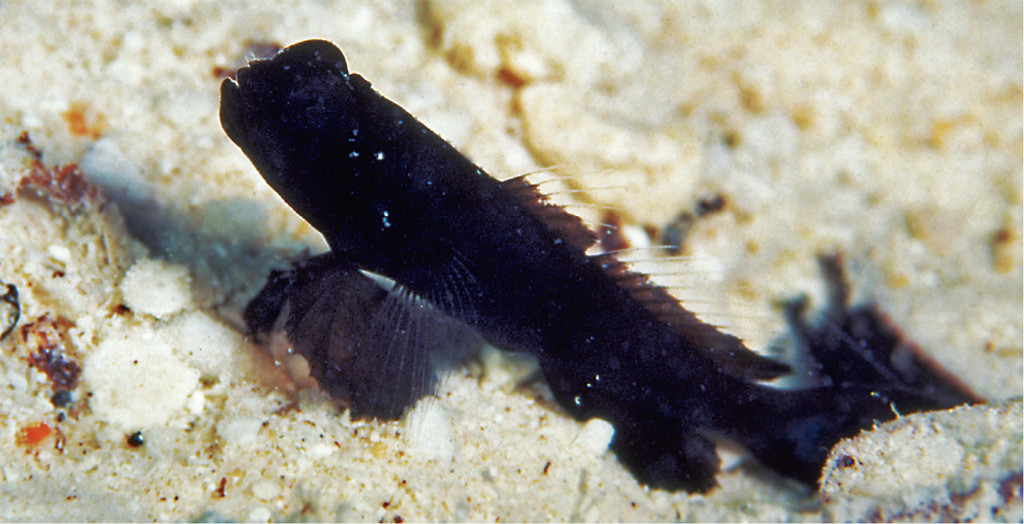
A small black shrimpgoby, possibly Cryptocentrus nanus, from Palau, Micronesia. Credit: Hiroshi Nagano / Greenfield & Allen 2018
New gobies are inevitable, and one can’t help but wonder if the oceans will ever run out of new dwarfgobies and pygmygobies. Of the former, we saw Eviota maculosa, a blotchy species that looks similar to about a thousand other Eviota species. Of the latter, there were a couple blue-eyed New Guineans added to the list, Trimma blematium and T. meityae. (My sincere apologies to Trimma hamartium. You are a lovely goby and I was mistaken for not having written about you). Also, shoutouts to Priolepis billbrooksi, Gobiopsis jackbrooksi, Tomiyamichthys stuarti and Helcogramma melanolancea.
But there was more than just microgobies in 2018. We found out that the Red Sea is home to Hoese’s Goby. If this one looks familiar, it should. This is the Red Sea’s unique flavor of a popular aquarium fish, Hector’s Goby. The true Koumansetta hectori found elsewhere in the Indo-Pacific has fewer stripes, so, unlike many of these new gobies, this one is fairly easy to notice at a glance. Given how well-studied and documented the Red Sea’s marinelife is, it’s actually pretty remarkable a species as distinctive as K. hoesei could escape notice for so long.
But my pick for top goby goes to the Blackdwarf Shrimpgoby Cryptocentrus nanus. With specimens sexually mature at just 17mm, this smol boi is the ittiest bittiest shrimp-associated goby ever found. To put this into perspective, the largest of its congeners, the Peacock Shrimpgoby C. pavonoides, is roughly ten times its size.
#7 Iniistius opaculus
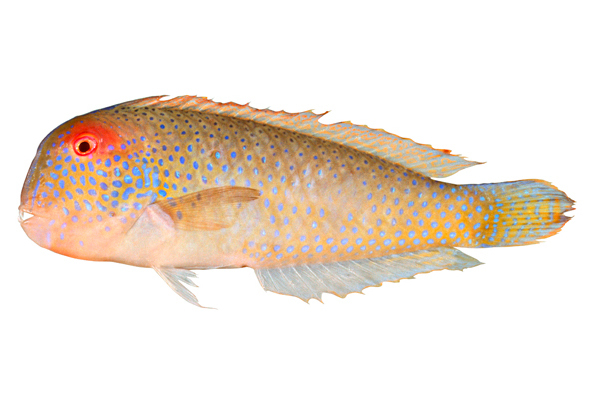
Opaline Razorfish (Iniistius opaculus), trawled specimen. Credit: Australian National Fish Collection CSIRO
Someone needs to travel to the sand flats off Northern Australia and photograph this stunning blue-spotted razorfish in the wild. If it looks this good in death, imagine how nicely this labrid must shimmer in life. Get on this, Monsoon Aquatics.
#6 Plectranthias ahiahiata
Time for the first of many anthiadines on our list. Let’s give honorable mention to Pseudanthias emma, a colorful rariphotic species from the Andaman Sea known only from trawled specimens. Plectranthias maekawa is an equally colorful perchlet found in Japan and is a species which has on rare occasion found its way into aquariums. Only a few specimens are known, and it remains a bit unclear how and if it is different from a similar species found in Hawaii.
Top honors go to the evocatively named Sunset Perchlet Plectranthias ahiahiata, which was found during a survey of the deep reefs of Easter Island by researchers from the California Academy of Sciences. This gorgeous fish comes adorned in shades of yellow and orange, like the blazing sun setting over some distant horizon. This is alluded to in this perchlet’s scientific name, which translates in Rapanui as “the last moments of light before nightfall”. Also, ahiahiata is just fun to say.
#5 Lipogramma idabel
It was a banner year for Lipogramma basslets. Back in January, we were treated to an exceptional paper about the patterns of speciation seen in the genus, along with the description of two new members, the Maori Basslet (L. shrieri) and the Blue-spotted Basslet (L. barrettorum). If you’re at all interested in how depth and ecology factor into a group’s diversification, I can’t recommend that study highly enough. And as if that wasn’t enough, there was another exciting new addition made just last week, the Blue-backed Basslet L. idabel. This one is only known from a narrow depth range, in a particular habitat, around the island of Roatan. Our best look at this vibrant new Lipogramma comes from the video seen here, which documents the collection of the type specimen from 100+ meters.
#4 Hippocampus japapigu

Hippocampus japapigu in situ, Hachijo-jima Island, Izu Islands, Japan from 10 m depth Credit: Richard Smith
Japan’s new pygmy seahorse was all over the news this year, but this wasn’t the only exciting announcement for hippocompophiles. Dr. Richard Smith and colleagues discovered a yet-to-be-named relative on an expedition to South Africa, the first pygmy seahorse ever found in the Indian Ocean. There’s apparently a new pygmy pipehorse as well. Perhaps we’ll get to see these scientifically described in the new year?
#3 Hypoplectrus liberte
The Liberte Hamlet might be one of the rarest marine fishes on the planet. In a genus known for its decidedly byzantine biodiversity, Hypoplectrus liberte stands out for how staggeringly restricted it appears to be. The only known population exists at Fort-Liberté Bay on Haiti’s northern coastline. This cloudy body of water connects to the Caribbean through a narrow outlet, effectively isolating the fishes here from those outside the bay. Given the predilection hamlets have towards rapid speciation, this has unsurprisingly resulted in a uniquely microendemic species, easily recognized by the bold stripe which runs along its sides.
It’s a shame that this species didn’t receive a bit more fanfare when it was described back in September. Aside from my coverage here at Reefs, there was little else written about this remarkable discovery. Oftentimes, whether or not a new species gets picked up by the press comes down to whether or not that species is pretty to look at. We’ll see species that fit this mold in the top spots of this list—new fishes that appeared more widely in the popular consciousness thanks to their gaudy colors—but there’s more to the importance of a species than its aesthetics. The Liberte Hamlet exemplifies just how wondrously complicated life is in the ocean. The evolutionary history of Hypoplectrus is in many ways analogous to the famed finches of Galapagos, with H. liberte being arguably the most remarkable of the bunch. This is a species in desperate need of more attention and conservation.
#2 Cirrhilabrus cyanogularis
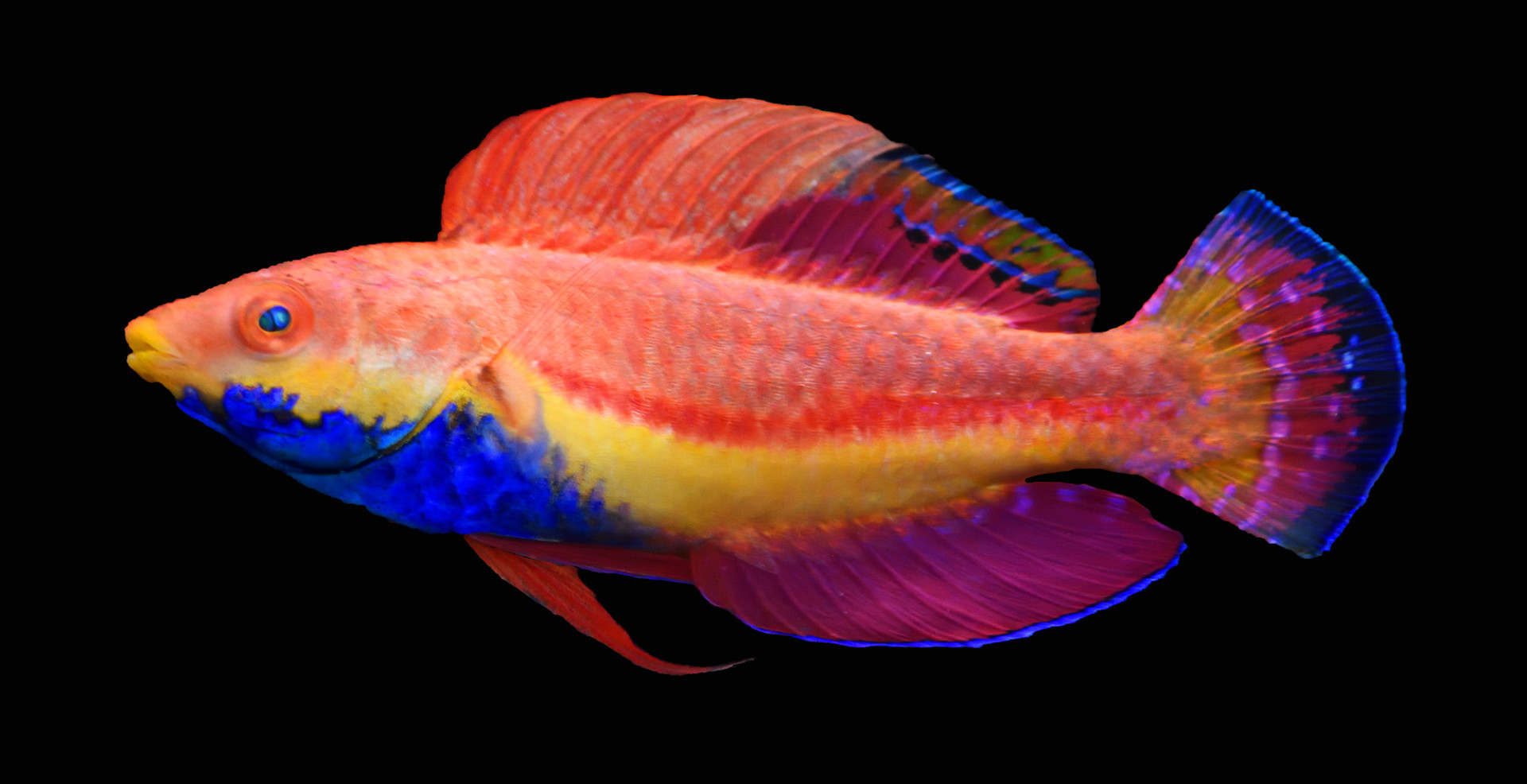
Sailfin Fairy Wrasse, AKA Blue Thorat Fairy Wrasse (Cirrhlabrus cyanogularis) Credit: Y.K. Tea / Tea et al. 2018
I first wrote about the “Sailfin Fairy Wrasse” way back in June of 2016, around the time when specimens started trickling into the aquarium trade from the southernmost Philippines, collected by RVS Fishworld. Some of these eventually found their way into the hands of labrid taxonomist Yi-Kai “Lemon” Tea, who finally christened this fish as the Blue Throat Fairy Wrasse Cirrhilabrus cyanogularis in May. Coupled with the rediscovery of Cirrhilabrus sanguineus and Cirrhilabrus randalli, 2018 was a very good year for fairy wrasses. Will 2019 be able to top it?
#1 Tosanoides aphrodite & Tosanoides annepatrice
It’s always an impossible task to pick a single fish for these top ten lists, but it was especially arduous this time around. There were plenty of interesting species and plenty of beautiful species named in 2018, and, ultimately, the final choice came down to two sensational new anthias whose vibrant colors stood out from the pack. With all due respect to the many exceptional basslets and gobies and damselfishes and perchlets and wrasses we met, Tosanoides was the clear standout this year. Rather than choosing between them, let’s just crown them as co-champions.
I’d wager that Tosanoides annepatrice is the single most colorful fish described in 2018, and it’s got to be among the most beautiful reef fishes ever found, full stop. (I imagine Anne Patrice is pretty happy about that.) This anthias has been on display at the Steinhart Aquarium for a while now, initially as an undescribed species. It’s the only place outside of Micronesia’s rariphotic reef ecosystems that you’ll find one, so, if you’re not certified to dive to 500 feet, you might want to check it out there while you can.
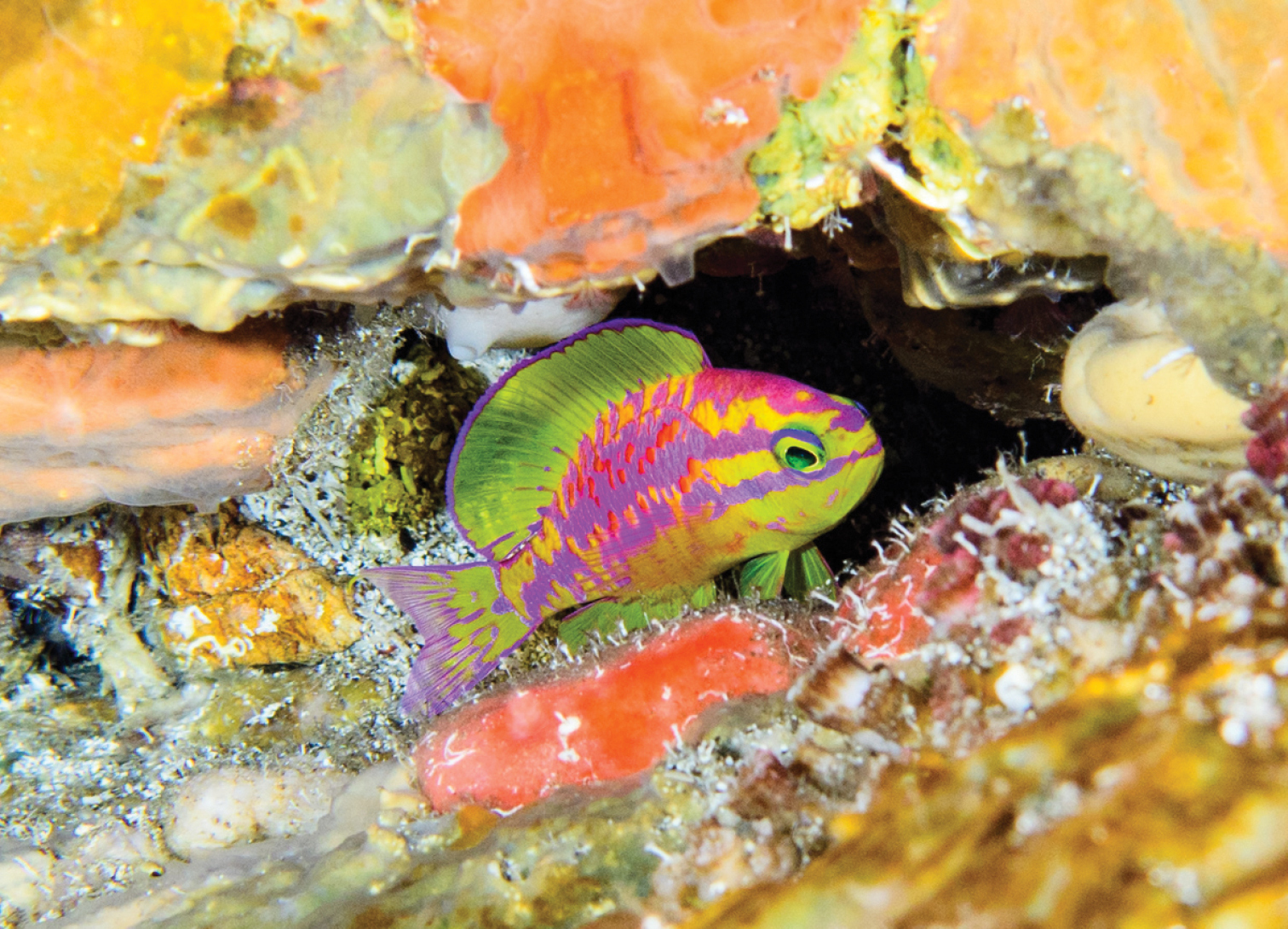
Tosanoides aphrodite in its natural environment, 120 m in St. Paul’s Rocks, Brazil. Credit: Luiz Rocha / Pinheiro et al. 2018
And then there was Tosanoides aphrodite, a completely unexpected find from the deep reefs of St. Paul’s Rocks. These seemingly lifeless islands sit 600 miles off the coast of Brazil and are home to a remarkable and oftentimes endemic marine fauna. It’s here, 120 meters beneath the surface, that the first specimen of this outrageously colorful new anthias were discovered. As it was being photographed and collected by its discoverers, Luiz Rocha and Hudson Pinheiro, a Sixgill Shark went completely unnoticed just behind them… such is the transfixing beauty of this illustrious little anthiadine. Question is, why is T. aphrodite only known from here and nowhere else in the Atlantic? Are there other populations waiting to be found somewhere (this seems unlikely given all the recent work done in the Caribbean), and what relation, if any, might this fish have to Hawaii’s enigmatic Pseudanthias fucinus?
In 2018, we managed to pull back the curtain just a tiny bit more on the ocean’s many mysteries, but there’s still much more work to be done. So as we welcome in the new year, be sure to raise a glass to all the hard-working taxonomists out there. Cheers to an excellent year of piscine discoveries!

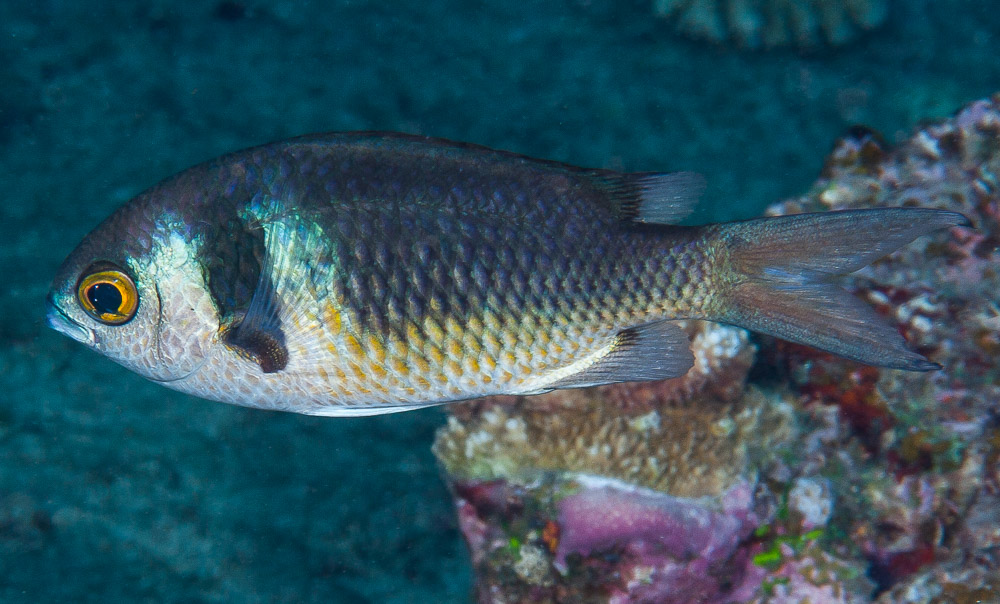
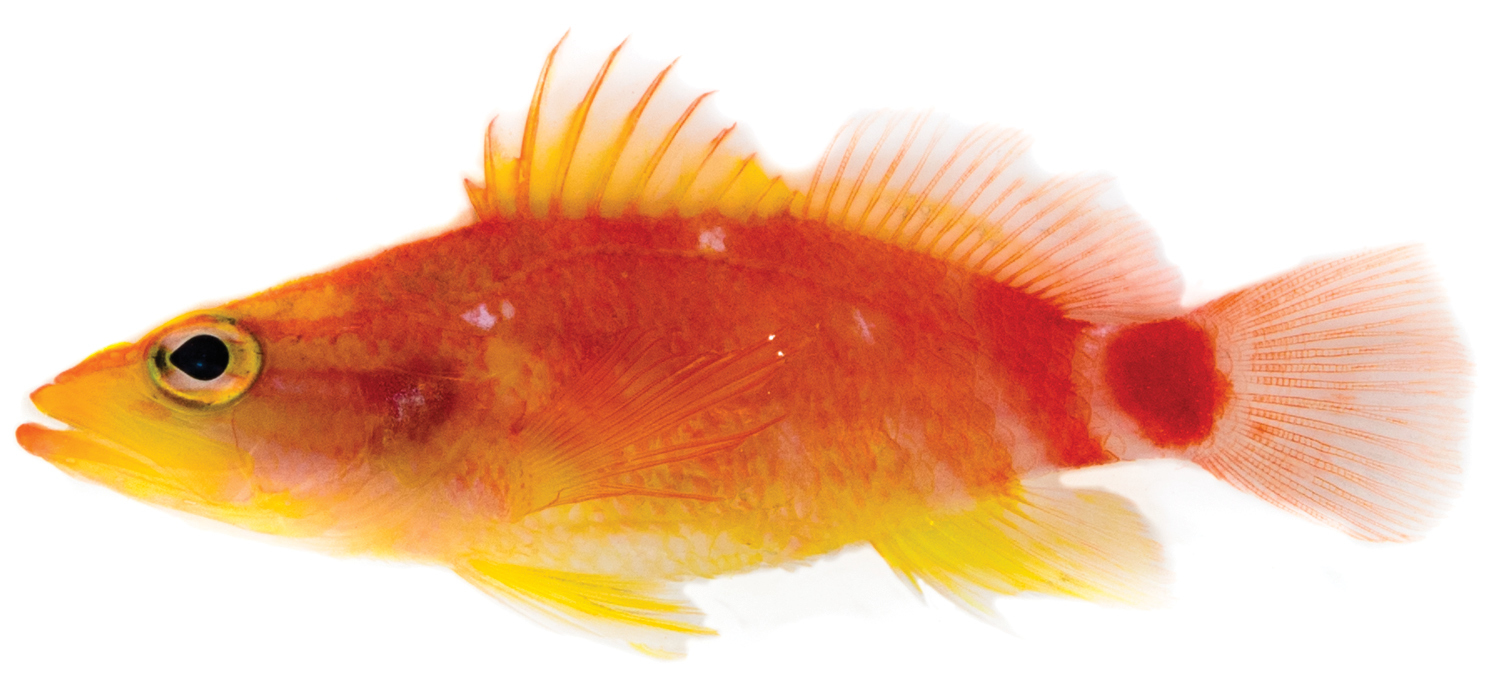

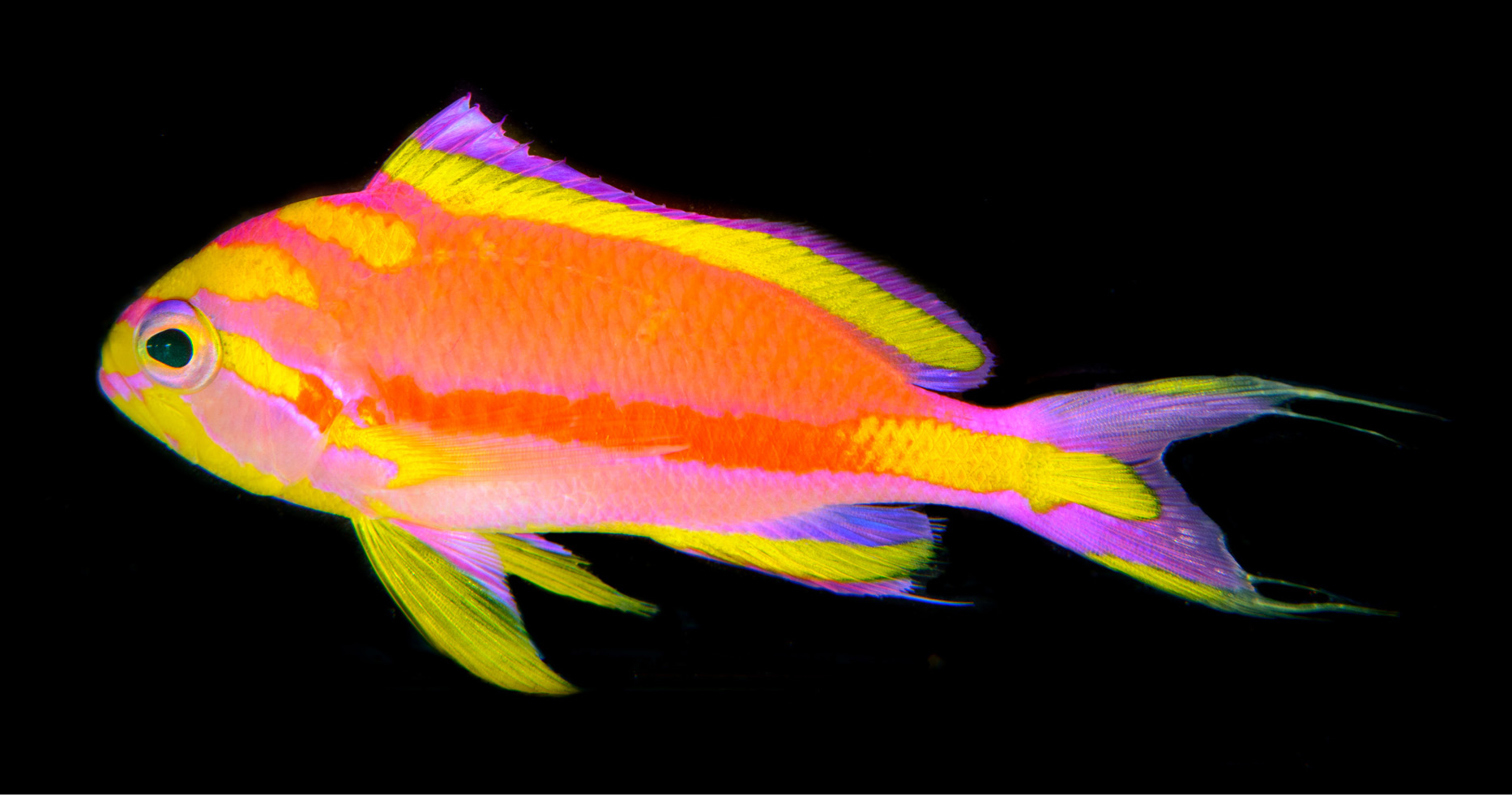








0 Comments